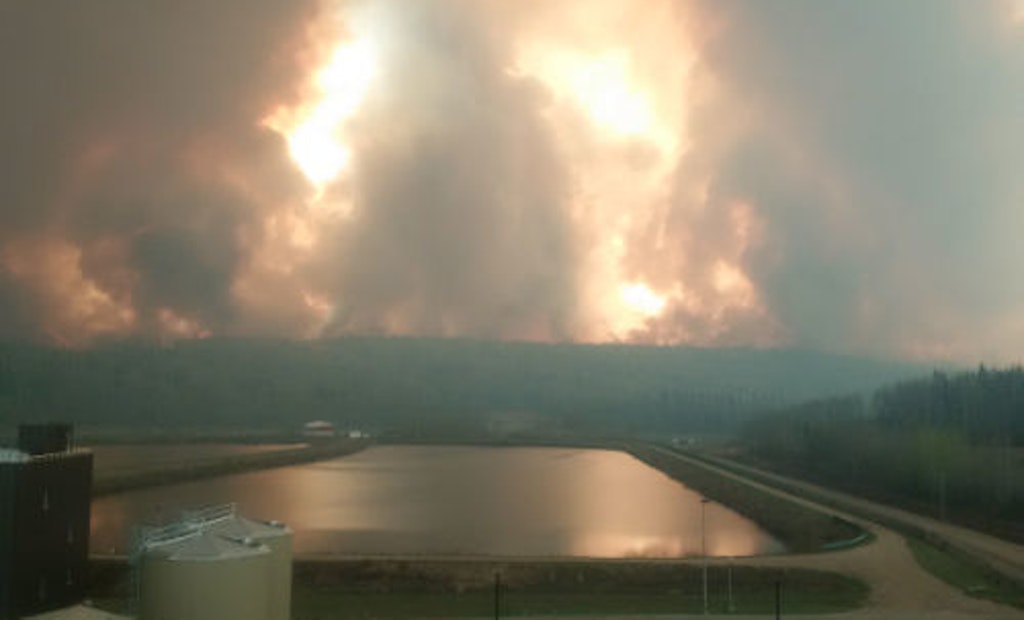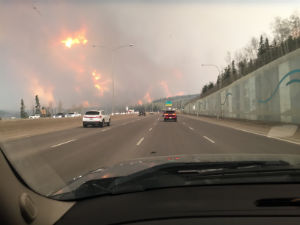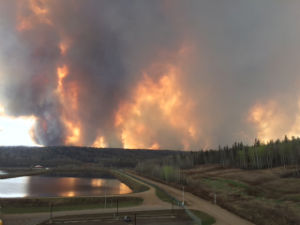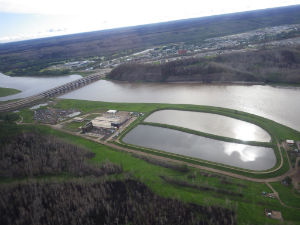
Interested in Safety?
Get Safety articles, news and videos right in your inbox! Sign up now.
Safety + Get Alerts
 “From where I live in McMurray, I could see the fire bombers from our backyard, but I didn’t think twice about it.”
“From where I live in McMurray, I could see the fire bombers from our backyard, but I didn’t think twice about it.”
That’s what Guy Jette, manager of the Fort McMurray Water Treatment Plant, initially thought when the smoke started rising in the distance on May 3 in the city of Fort McMurray, part of the Regional Municipality of Wood Buffalo in Alberta, Canada. But in the next few days, Jette changed his tune dramatically.
“As the days went on, it got smokier and smokier. We got a call [from the municipality] that things were not looking good. … We were told to come up with a plan; we wanted to be proactive in case things got out of hand,” Jette says.
“I’ve lived in this area my whole life,” he says, adding that while he’s witnessed many forest fires threaten the region, nothing had been as devastating as this fire — dubbed “The Beast” by local fire enforcement.
“Personally, I don’t think anybody has seen anything like this,” says Jette. “Our emergency response team really took care of us. They had a fire truck outside attached to a fire hydrant.”
The fire that started in May forced the evacuation of about 90,000 residents, destroyed about 2,400 homes, prompted boil-water advisories and burned 2,300 square miles until it was finally contained in early July.
And while water was going to be an essential commodity in the fire-fighting efforts, Jette and his crew operators knew they had to remain on alert.
“My municipality needed our group, and I needed to be there,” says Jette, who has worked at the plant for 38 years. “I did not want to leave.”
 Saving the plant
Saving the plant
Although the fire threatened many square miles, priority No. 1 for Fort McMurray was saving the 8.5 mgd water treatment plant. Fortunately, the treatment plant sustained just surface scorches from the fire and remained mostly unscathed, except for the loss of a storage hut.
Being spared from the fire’s damage was a huge boon for the municipality. Richard Guerin, supervisor of the sustainable operations department for Wood Buffalo, told The Edmonton Journal, “The downtime and damage could have been almost immeasurable; we could have been talking months before people could come back.”
Jette and his co-workers endured 16- to 20-hour shifts, sleeping on the floor when possible, to keep the plant running and water flowing.
“All bets were off; everything was on the fly,” Jette says of those first frenzied days. Even their initial emergency plan became obsolete as the fire spread about 1,200 feet per second.
“All [sorts of] feelings came into play,” says Jette, who recalled getting angry the first few days. “What the heck did [our community] do to deserve this? It was mind boggling. I couldn’t comprehend the magnitude, the destruction.
“We were bombarded by phone calls [from emergency staff saying], ‘We want more pressure here, we want more flow.’”
And for about six hours, the operators were flying blind, with no communication from the municipality’s emergency offices, which had been forced to evacuate as well.
Although the treatment plant “was never really down,” says Jette, the operators were evacuated three times during the month when the fire shifted closer to the plant. At those times, operators headed to Noralta Lodge, a camp 20 miles north where they monitored the plant wirelessly from a laptop.
The operators could then just see their plant in the distance, across the Athabasca River. “It was smoky, very smoky; the plant remained running without us.”
They were also assisted by operators from the city of Red Deer, about 400 miles south of Wood Buffalo, as well as Calgary and Epcor. Distant operators used codes provided by Associated Engineering, the company that had designed Fort McMurray’s systems.
“These operators … helped those of us in the plant by monitoring and pointing out what we couldn’t see throughout our community during the abundant power bumps the first few days,” says Jette.
Despite the long hours and lack of sleep, Jette and his crew stayed the course. And even though one operator had to leave during the month due to health reasons, he soon returned. “You couldn’t keep him away,” Jette says. “The operators were determined to keep our losses as low as we could after the initial attack on our city. Failure was not an option, and we were adamant we were going to continue to supply water to the first responders.
“We went to the pump houses every shift to ensure they were operating as per design. We rotated pumps to give us the results we needed to pump as much water as we could to save as much of our community as we possibly could.”
To protect the distribution system, the plant switched from its usual chloramination process to a free chlorine residual.
"Since we were producing water at such a high rate, I felt more confident that the free chlorine would be more advantageous to us in maintaining water quality throughout our distribution system," says Jette.
 In the aftermath
In the aftermath
Jette says the group of 10 worked extra hours for about a month until the immediate danger had passed. After the fire, all of the plant’s 12 reservoirs — each holding an average of 2 million gallons — had to be scrubbed, disinfected and refilled.
Jette lauds the cooperation of community departments, local industry, First Nations and other municipalities in fighting The Beast. He says the team went together “just like bread and butter.”
And although many local citizens, Boy Scout troops and other organizations have stopped by the plant recently with treats to thank them for their work, Jette remains humble.
“To me, the heroes are the first responders,” he says.
The boil-water advisories are over, the treatment plant is back to its usual hum, and residents are back home. However, it’s likely the Fort McMurray fire, which now holds the title of the costliest disaster in Canadian history, will not be forgotten.
Jette called the experience the “most intense” he’s had in his 38 years at the plant. And it’s likely he won’t see another; he plans on retiring this year.
Photos courtesy of Fort McMurray Water Treatment Plant; photos by Darrel Shymoniak, Steven Meunier and Travis Kendel.





